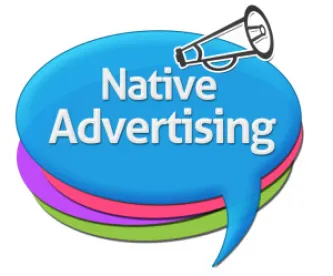Many consumers are quick to skip or block digital ads when browsing through content on the Internet, including in social media. As a result, advertisers must continuously work to come up with creative ways to grab the attention of ad-avoiding consumers in order to deliver their advertising message. One popular method of online advertising that tries to achieve this goal is so-called “native advertising.”
Native advertising is advertising content that resembles the design, style and functionality of the media in which it is integrated. In other words, the ads look and feel like natural content, and are often indistinguishable from the surrounding news, feature articles, editorials, and other regular content. Recognizing that this type of advertising has the potential of deceiving or misleading consumers as to its commercial nature, the Federal Trade Commission (“FTC”) recently released the Enforcement Policy Statement on Deceptively Formatted Advertisements and Native Advertising: A Guide for Businesses to assist businesses in making sure their advertising meet the FTC’s truth-in-advertising standards.
Native advertising actually is not a new idea. The FTC first addressed the issue of advertising appearing in a news format in the 1960s. The trend continued through the years as similar advertising methods emerged, such as infomercials that deceptively mimicked television news programming, “advertorials” disguised as news stories, and paid ads formatted to appear as regular search engine results. In this digital age, native advertising now often takes the form of ads formatted as news articles on a news aggregator site, or in-feed ads on social media platforms, such as Twitter’s promoted Tweets and Facebook’s boosted posts. However, throughout the evolution of this method of advertising, the FTC’s message has remained the same:
advertising and promotional messages that are not identifiable as advertising to consumers are deceptive if they mislead consumers into believing they are independent, impartial, or not from the sponsoring advertiser itself.
If one had to summarize the FTC’s recent guides in one term, it would be “transparency.” The FTC makes clear that the recent proliferation of natively formatted advertising raises questions as to whether these methods mislead consumers about the commercial nature of the content. It is important that consumers know the source of information they are reading or seeing because it could affect whether a consumer chooses to interact with the content or could affect the weight or credibility the consumer associates with the information.
The FTC painstakingly goes through seventeen examples to highlight ways in which consumers could be misled by native advertising. One example is an ad placed in a online magazine that misleads consumers that it is an ordinary magazine article that reflects the independent views of the publisher. Another example is a sponsored video featuring an advertised product that looks like the many other unpaid videos on a website. In the social media realm, the FTC states that it can be misleading to include buttons for consumers to “share” an article from their personal media streams that resembles the regular articles posted in the same online publication. Indeed, in all of these examples, it is not just what the ad says that can be misleading, but also the format it uses to convey that information.
Does your company use any of these advertising methods? Not to worry, there is a way to dispel the potential deception described in these examples: disclosure. Not only must advertisers disclose the commercial nature of the ad, they must also make sure the disclosure is clear and prominent. Our table below sets forth our “top ten tips” as a summary of the FTC’s recommendations when it comes to disclosures.
Finally, the FTC warns that its Enforcement Policy Statement does not just apply to advertisers:
Everyone who participates directly or indirectly in creating or presenting native ads should make sure that ads don’t mislead consumers about their commercial nature.
Indeed, any other parties who assist in creating advertising content that may be viewed as deceptive are fair game to the FTC, including ad agencies and operators of affiliate advertising networks. Thus, companies and all other participants involved in creating and delivering the advertising message could become a target of an FTC enforcement action if the advertising is deemed to be deceptive.
And now on to our top ten disclosure tips:
|
1. |
Make the disclosure near the ad’s focal point. |
|
2. |
Make the disclosure immediately in front of or above the ad’s headline. |
|
3. |
Make the disclosure on the native ad AND the click- or tap-into page on which the full advertisement appears. |
|
4. |
Disclosures should be large, visible and in contrasting colors. |
|
5. |
Audio disclosures should be in a sufficient volume and cadence for consumers to hear and understand. |
|
6. |
Visual disclosures should be displayed long enough for consumers to notice, read and comprehend. |
|
7. |
Use plain, straightforward language (no technical jargon). |
|
8. |
Use “Advertisement” or “Sponsored Advertising Content,” and NOT “Promoted” or “Presented by.” |
|
9. |
Make sure disclosures are maintained when the ad is republished or shared by others. |
|
10. |
Do not use only company names or logos on their own to signal that content is commercial advertising. |




 />i
/>i
